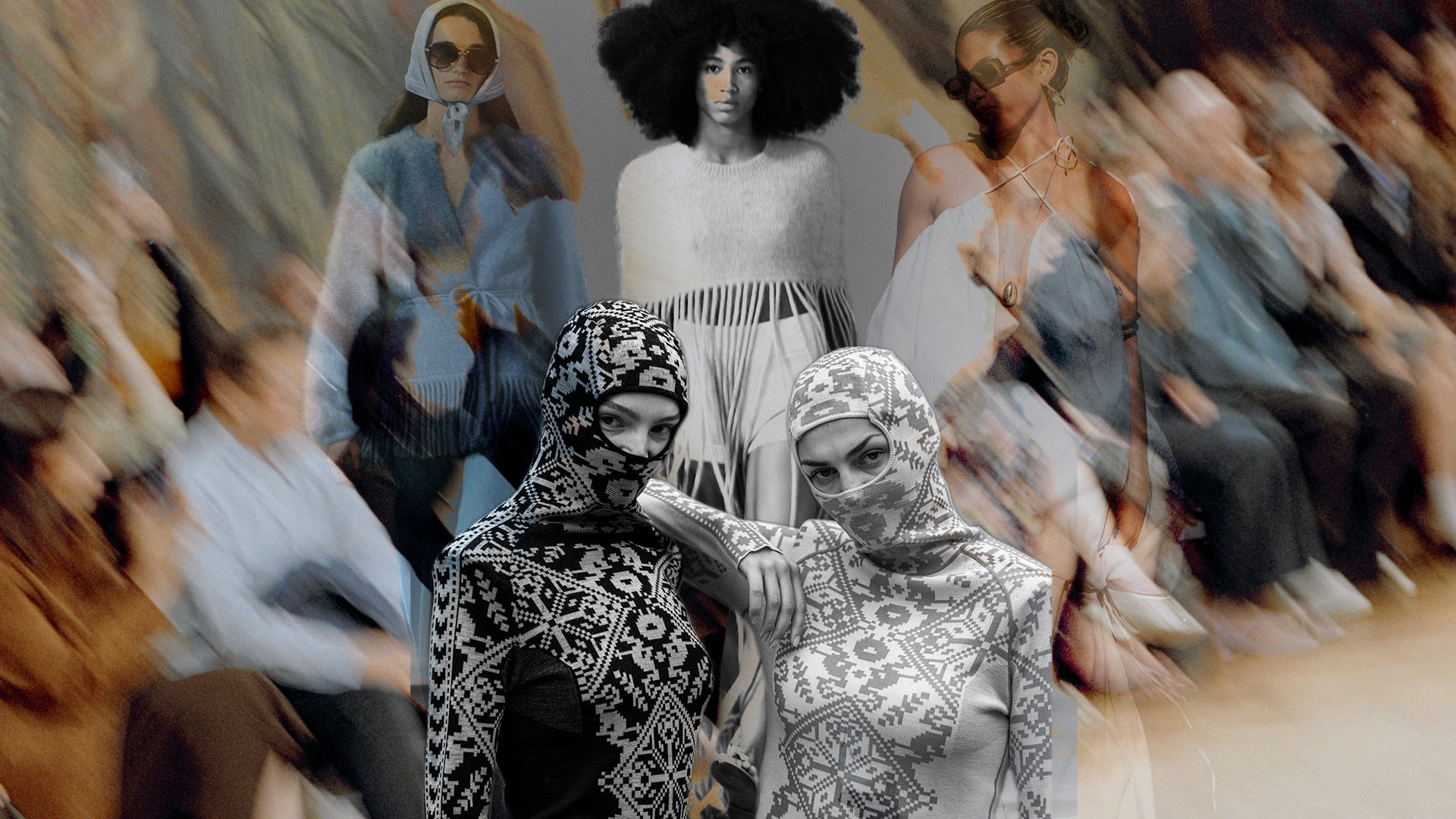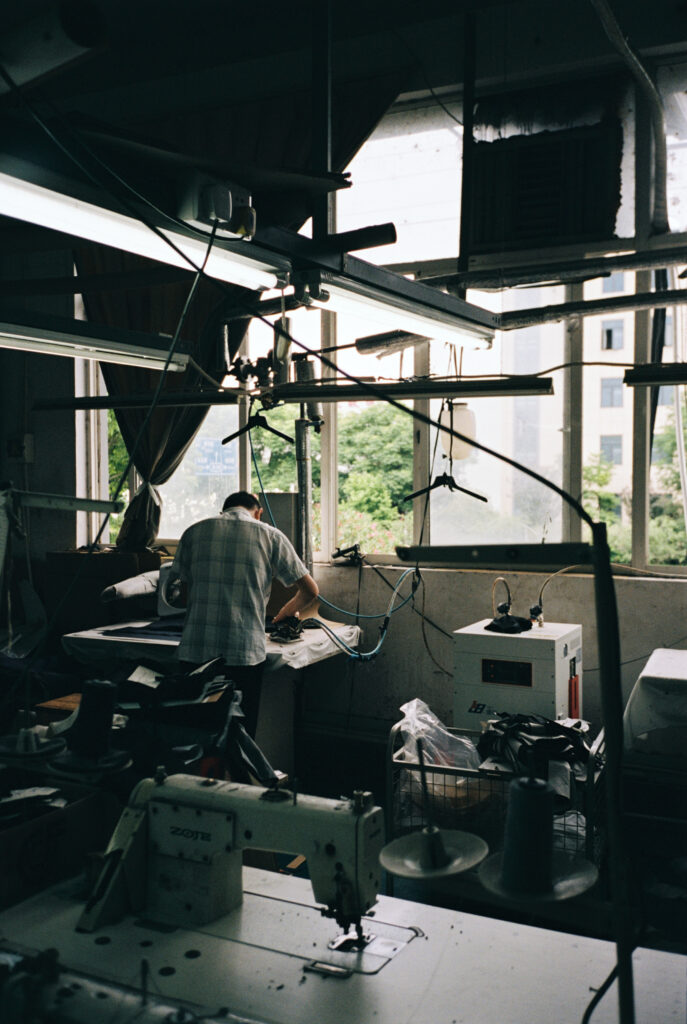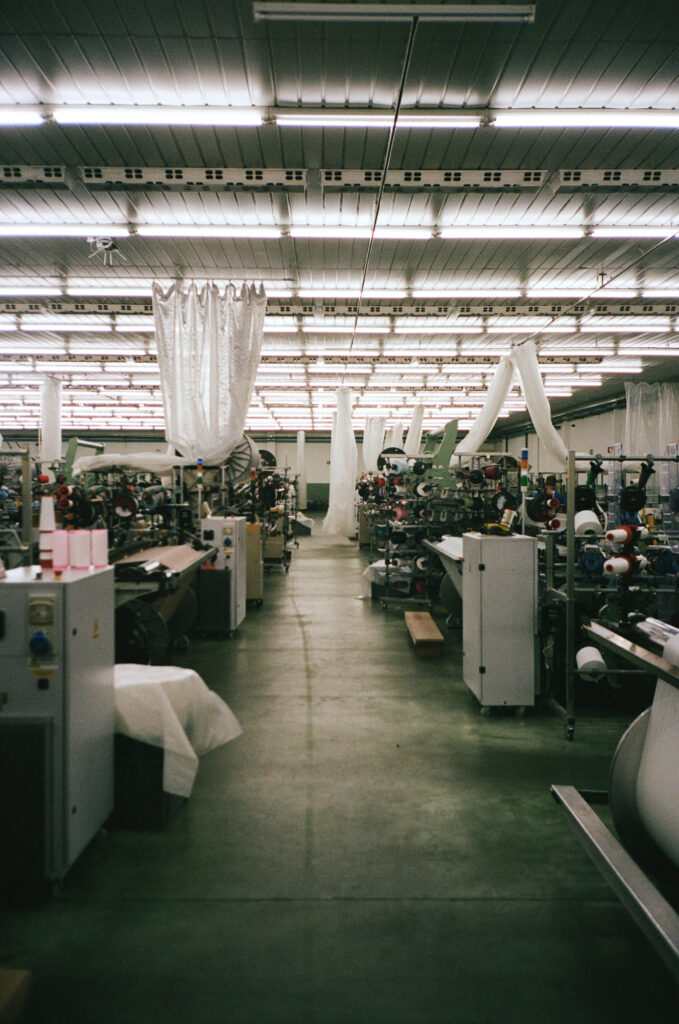
Oslo Runway saw a roster of initiatives utilising local raw materials and manufacturing, and one key figure behind this development is Gisle Mariani Mardal. As Head of Development at the Cluster for Fashion and Textiles in Norway (NFT&A) and founder of production facility and innovation lab Manufacture Oslo, as well as part of the ownership structure for conscious Norwegian fashion brand ESP, he’s spent 15 years increasing awareness and improving the infrastructure to see ”Made in Norway” grow.
— Looking back, these 15 years have been really interesting, he says. I started working right after the financial crisis, in 2008, so it’s always been a steep hill, and it’s never been easy. But this work has also been part of the whole paradigm change with new technologies, sustainability, and more focus on local production, and it’s been an interesting journey just because I think the industry needs that change.
Increasingly, local brands turn their heads back to Scandinavia for production. What’s your view on this shift?
— It’s a huge problem in general that we have geared an industry towards such perfect manufacturing principles based on low costs for people working in the production end of it. When we saw the shift from European production to the Far East production, everything just became so cheap. To maximise the business model, brands needed extreme volumes. That’s what’s at threat now, because, on the sustainability note, you need to reduce overproduction and overconsumption, look into the price structure of the products, and pay what the product is actually worth.
Yes, overproduction is always the elephant in the room. Are brands improving there?
— Not really. I think they have to, at one point, but for now, they’re struggling with the old business model. There’s been an overestablishment of brands, which I think is disappearing, or has to disappear. We’ll get more towards the core of what’s actually needed in the world when it comes to clothing and fashion. Especially in Norway, we see a huge surge in circular business models when it comes to reuse, resale, and repair. Even though it has not fundamentally been accepted as a proper business model yet, with more work, it’s going to become an important part of the industry setup. Companies need to move away from a product-based business model to a service-based business model, where this is integrated.
Is that how they can grow in a more conscious way?
— I try to talk about development, financial development, a sound financial structure, the company’s business model, and different kinds of revenue possibilities. A business is based on one form of growth or another, but it can be a regenerative growth, within certain types of limits. It’s a problem for a company to understand how that could be fitted into a business where all your money has been invested, so that you just keep going and growing and producing volumes. If you understand the core of being able to capture value in a regenerative way, you can succeed in the future, but I don’t think it’s the big companies today that will lead the way.
In challenging times, brands tend to be less keen on spending money. Do you still predict growth for local production in Norway?
— Yes, there’s a big interest in it. The growth also comes from the fact that we are now understanding how the business models can work. Take (Norwegian fashion brand) Woodling as an example. After they started communicating that their production was local, the interest from their customer base has just increased. They also target the travel industry. Coming to Norway, people who see this beautiful country also want to buy beautiful products that are made here. That’s also part of the structure of new business models.
What you’re saying is that we’ve only seen the beginning of the rise in local production?
— Absolutely, Mariani Mardal states. I’ve worked with Woodling for a long time. They now base their manufacturing setup on a more local scale, using 3D knitting as technology to support that type of manufacturing in Norway, where it’s really expensive. Understanding how to use technology in a way to achieve sustainability is a really interesting way forward.

Celebrating 10 years this year, CEO Elin Carlsen states that the Oslo Runway organisation is ready for the next decade after building up confidence throughout the years. A period which has seen an astonishing 1,100% growth for the biggest Norwegian fashion and lifestyle brands.
— Our dear neighbours in Sweden and Denmark have had that confidence for a longer period of time and also have a longer history within fashion and design. Now, people are coming to us from the sports industry, the fashion industry, creatives, and professionals, saying that they can feel this confidence.
You’ve also received the first-ever governmental support.
— Finally! It means a lot. And, I think we are also showing them that they get value for money. Before Oslo Runway, we were in London and at Copenhagen Fashion Week, having a showroom. Together with CIFF (Copenhagen International Fashion Fair), we hosted a dinner for 30 selected buyers, and it was incredible to see the response. A lot of these people are now coming to Oslo to experience the brands at home in their local environment. That is great.
What else can you say about the response from the people invited here?
— We don’t have a big international fashion fair, so many of our brands are travelling to Copenhagen, Milan, or Paris. We now mostly have agents coming here because they are the door openers for the Norwegian brands. They are really picky, given the difficult times for the fashion industry right now, and they want to have things that really stand out, or have a secure business. This week, agents from Japan and the UK are having meetings with Norwegian brands, and that’s also a part of the government funding. We need to report, show results, and be result-driven.
You’re also talking about expanding further.
— Yes, always dreaming. However, sometimes everybody’s talking about bigger is better. I don’t know about that for Oslo Runway. It’s important to keep the level really high; more quality than quantity. For us as a local platform, I hope that more and more actors in the local industry will join our off-schedule program — it’s really fun that things are happening all over the city, Carlsen explains. She adds:
— We also see that several of the Norwegian brands have really good attention from Asia, especially Japan. The Asian buyers are in Paris, not so much in Copenhagen, yet, so I think it’s important to be there, in Paris, as well.
So, bigger is not always better, and even more curated is the very best.
— Yes, at least for a local fashion week like ours that is aiming to reach a global audience. Then, you need to give the audience and guests a good experience of Oslo. Also, the culture, architecture, food, music, and the city need to be something more.
The general feeling is that this is a conscious fashion week. No mass production, not the biggest, most commercial brands showing.
— Yes, it’s a mix. We have some of the biggest brands, small, local actors, and those in between. With everything regarding sustainability and responsibility, it’s important to do a ’show, don’t tell.’ We had a pop-up at Steen & Strøm (the world’s oldest still operating department store) with seven brands, of which six are producing in Norway, which is quite unique. There are, for instance, female-founded brands that have invested heavily in machinery on the south coast of Norway to work with 3D knitting. That, I think, is fantastic!

For Oslo Runway, wardrobe essentials brand Julie Josephine, founded in 2016, had asked its clients to lend out their up to nine years old garments. These were presented in the special Icons exhibition in the brand’s Oslo store, to highlight quality and longevity.
Founder, what’s been the hardest challenge throughout almost a decade running the brand?
— To find the right fits for the products, I’m obsessed with finding one that works for all women. I don’t want to make products that you need to stick a thin woman in; I want it to be for the everyday woman, so nailing the fits of the products has been challenging, founder Julie Josephine Blystad explains.
Do you get many questions from end consumers about production?
— Many, many questions. Where the products are produced, how they are produced, where the cotton is from… So, you’re always forced to get all the information; there’s always someone asking.
— We have such a clean value chain, so I can answer them with my head up high, and we have nothing to hide. That’s also why I’m not so worried about Digital Product Passports — we have full control of where everything is from.
You’re in the process of becoming GOTS certified. Have you also worked with other material innovations instead of the resource-demanding cotton?
— No. I’ve tried different materials, washed it, and it just doesn’t hold up. I can’t change my qualities; it just has to be what it is.
Any other advice to someone looking to start a brand?
— If you overthink it, you will never do it.

For Oslo Runway, denim and contemporary brand Livid presented a total re-work of its Transparency portal online, letting customers dive even deeper into the whole chain of value.
— That said, not only for the garment itself, but also the whole chain of value for all components, labels, and so forth, says Ole Eivind Siggerud, Product Manager. You will be able to dive into the real nitty-gritty, product-specific, letting you trace the metal mining and processing that goes into your rivets and zippers.
– We’ll also introduce a live map for our supply chain that will show activities such as factories that are working on our clothing and ships transporting our Japanese denim to Portugal in real time.
Transparency is a true industry buzzword. What makes this work so unique?
– Transparency has always been a core value of the brand. Coming from such a material-focused point of view, where the choice of fabrics and how our jeans were made was key to our brand, we naturally started talking about our suppliers. Many brands choose transparency to show that their production is sustainable. For us, our main motivation was more educational. We felt it was important to communicate how modern clothing production works, and especially showing how complex it is, instead of romanticising the image of manufacturing. We want to show and tell, and we hope it makes consumers appreciate and reflect on the amount of labour that goes into not only our collections, but all clothing in general.
What have been the hardest challenges throughout this work?
– When we first started working on opening our chain of value in 2014, it was very challenging to retrieve the information we wanted. Our fabric mills and other suppliers had never been asked about their supply chains further down the chain, so gathering all the information and documenting it all took us two whole years of persistent work. Since then, our suppliers have become much more used to transparency inquiries in general, so the information gathering itself is now a lot smoother, though it still requires a lot of work. For the re-launch this year, the largest task has been developing our own digital infrastructure to request and retrieve information automatically to keep our Transparency portal up to date at all times, Siggerud shares. He continues:
– We’ve learned a lot about the technicalities of global production from this project. Our goal was in large part to communicate about the complexities and all the labour that goes into the production of clothing, but when we first started tracing our chain of value in 2014, we learned that it was even more complex than we first expected. On all our factory visits, a great perk is that we also learn a lot about the local cuisines!
What has been your driving factor here?
– Really, the main motivation back when we started documenting our chain of value more than ten years ago was to give us more things to talk about. We felt transparency was really important, both for brands to make better choices and for consumers to know what they were getting and have a reference for pricing. But back then, those conversations really weren’t happening in fashion. They still aren’t really, to the degree that they should.
Does this work also help you with the implementation of Digital Product Passports and other upcoming regulations?
– The backend we developed for this re-launch definitely makes us ready to implement DPPs quite swiftly, as we now have an infrastructure to easily collect all the information we need and feed it into whatever format the DPP will require.
– We’ll now keep visiting suppliers, digging deeper into our chain of value, and communicating to our audience. From January onwards, all our products will have QR codes which will show the product’s full chain of value, Siggerud concludes.


Kari Søreide, Head of Department at ESMOD and Department Manager of Kristiania College, took the stage for one of the highlights of the week: Dale of Norway’s panel talk on the future of craft, and how to boost the local one.
— My biggest takeaway was a clear understanding of how important materials are in the Norwegian faith. Maybe I’ve taken that a bit for granted, although I definitely see it in our students and their love for materials.
What are the most important things for your students in order to get a job?
— Besides being dedicated, hardworking, and staying true to oneself, it should also be well thought through. When they present concepts and their graduating collections, all of the different components of their project must be well thought through and cohesive, and show their understanding of the business and the craftsmanship.
Do you think Norwegian fashion students stand out in any way, compared to Danish or Swedish?
— To a large extent, we’re quite similar, having the basis in minimalism. Perhaps, we’re a bit more down to earth. The Danes have this coolness and bohemian vibe, while Swedish students also have a coolness and are very good at image building. Being down to earth and linked to functionality can also be a strength.
How good are they in using new technology?
— They definitely use AI, but it’s important to stress AI as a tool, not as a final solution. We try to incorporate it in different parts of the design development process, as one of the methods, not the only method and not the final one. Otherwise, we’re quite traditional, working a lot with 3D modelling on the dummy in addition to flat pattern making.
How good are they in sustainability?
— It’s difficult to say. When are you good ’enough?’ We definitely have a focus on it, and when it comes to sustainability, there are different roads towards the same goal. We try not to implement the easy solutions, but focus more on looking at the complexity of it, Søreide shares. She continues:
— This year, we started an interesting cooperation with Fretex, a charity, which sponsors our students to do a complete upcycling collection. For us, it’s a new way of working. How do you scale it? Upcycling is going to be a costly process, and you’re creating more waste if you’re using products that could be resold. One of the students worked with wedding dresses, which are a bit difficult to resell, because you might not want to buy them second-hand, so they mostly sell them as Halloween costumes. Working on a certain garment as the starting point for upcycling means that it’s still possible to scale it; you know you’re going to have a certain amount of wedding dresses. So, we try to work on concepts like that, and each student has to describe how they ’relate’ to sustainability. We don’t expect them to solve it, but at least explain what parts of sustainability they’re focusing on and how.




